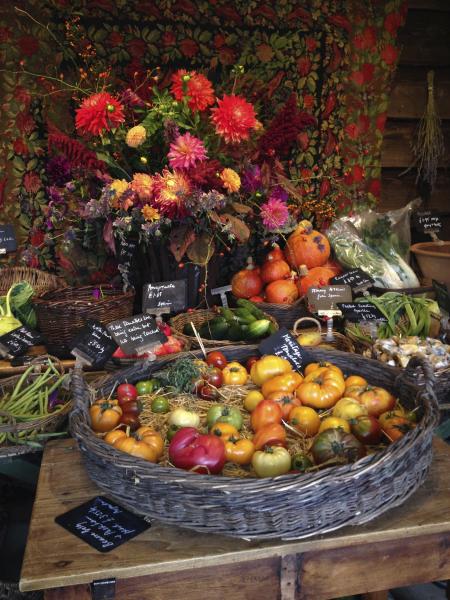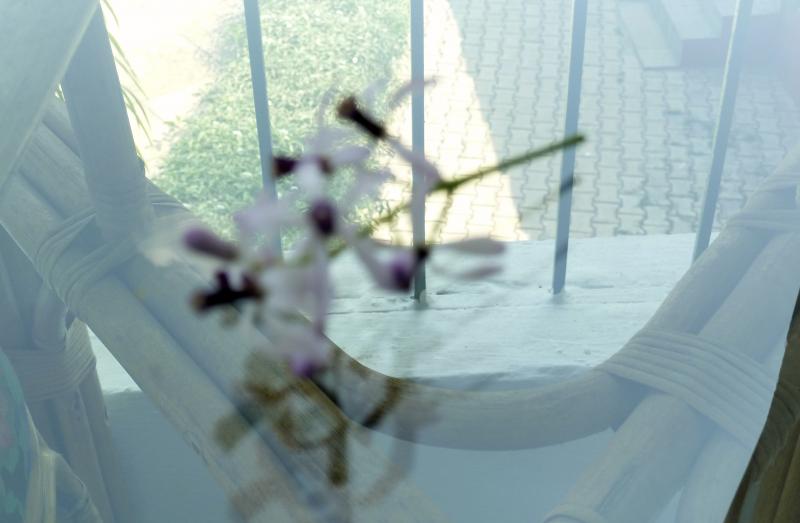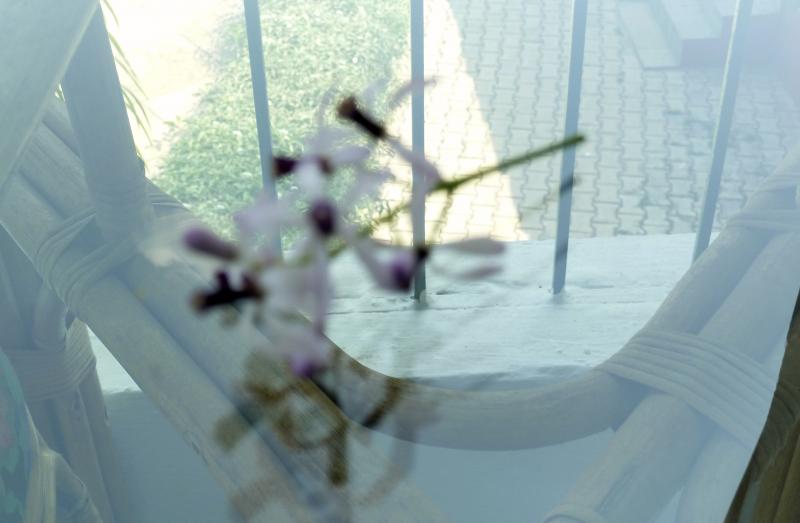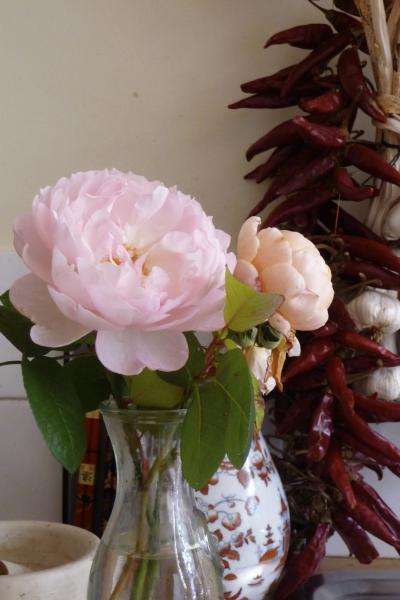“Who knows what form the forward momentum of life will take in the time ahead or what use it will make of our anguished searching. The most that any one of us can seem to do is fashion something-an object or ourselves- and drop it into the confusion, make an offering of it, so to speak, to the life force.”
So begins Why We Make Things and Why it Matters, subtitled the Education of a Craftsman which I heard being discussed by a Radio 4 panel at the the 2015 Hay Festival. The author, Peter Korn, is a furniture maker and as I had just been to several studios at the recent Artweeks happening in Oxford, I immediately sent off for his exploration into the process of self-transformation.

Prinkie Roberts, Landscape in silk
Browsing through the huge menu available at the annual Oxford Artweek I visited a textile artist, a weaver, a photographer a printer and printmaker who share a studio, a potter and a wood carver. I’m not a regular at this event, as I find the sometimes bland displays of pottery and watercolour paintings a bit underwhelming; but this year I was moved and humbled to view the fruits of many months of labour, and to have a chance to chat with artists whose work speaks of years of commitment to their calling and passions.
Carole Thorpe, spinner and weaver, told me about her domestic science classes when she was a schoolgirl. “We had to launder six different kinds of hankies- cotton, linen, silk and were taught to do it meticulously. I know it sounds ridiculous, but it was the care to detail that mattered. Then in cookery, potatoes had to be peeled to a millimetre of their surface. When that was perfectly mastered we were allowed to use a peeler. It mattered, because we worked in a thorough way, going through each step and learning to respect the process.”
They obviously were familiar with the philosophy of the Slow Food Movement.

Carole Thorpe’s natural dyed wool. I bought several small balls of pinkish wool coloured with madder and hope to knit a scarf.

Carole’s loom and green tweedy weave
Peter Korn in Why we Make Things and Why it Matters, quotes Robert Pirsig, one of his heroes (remember Zen and the Art of Motorcycle Maintenance? Not that I ever read it, but it was a cult book when I was a student in the sixties in Vermont).
Persig: “Caring about what you are doing is considered unimportant or taken for granted.” For a good life one should cultivate a craftsmanlike engagement with the actions, objects and relationships of ordinary experience.
Two other heroes, Sociologist Richard Sennett: What is needed is “an aspiration for quality in our workplaces and schools and Matthew Crawford (Shop Class as Soul Craft) argues that our educational system and occupational structures are deformed by a prejudice against manual labour. Crawford too emphasizes that the key to a good life is the engaged pursuit of quality. In fact they all seem to be extolling Mindfulness thirty or forty years before it became fashionable.
“The engaged pursuit of quality” and the best way is through making things with our hands.
Korn does a useful run through of the evolution of studio crafts, from the Arts and Crafts movement started by William Morris and John Ruskin, who brought together three strands of 19th century thought: the applied or decorative arts, the vernacular and the politics of work and wove them together into a single compelling counter-industrial narrative that they labelled Craft.
He talks at length about his own evolution as a furniture maker to teacher: “Even so simple an operation as cutting a mortise harmonizes intellect, manual skill and character in a way that underscores the artificiality of the Cartesian divide between mind and body. When you add the creative component of design, craft becomes a fully integrated application of one’s capacities.”
Bernard Leach, the great potter wrote, “A potter is one of the few people left who uses his natural faculties of heart, head and mind in balance- the whole man.”
In the workshop, wishing just won’t make it so. The craftsman is forced to come to terms with the physical properties of materials, the mechanical properties of tools and the real capacity and limits of his own dexterity, discipline and imagination. “In this way,” says Korn, ” materiality imposes cooperation on the sometimes discordant factions of the mind.”
I terribly coveted Prinkie Roberts‘ textile hangings, but resisted because of lack of space. Most of them would need a whole white wall, not because they are always large but because of their singular and commanding presence.

Wall Hanging by Prinkie Roberts


And Prinkie, like Carole, Bernard the photographer, Richard the printer Bob the Bodger (who made a new ash wood handle for my spade)and Harriet the potter, carry on the traditions of studio workshops, passionately engaged and an example to us all.

Bob the Bodger with his hand-turned lathe. Bodgers used to be chairmakers who worked in the Chiltern woods near High Wycombe.

Prinkie Roberts and her textile art





























